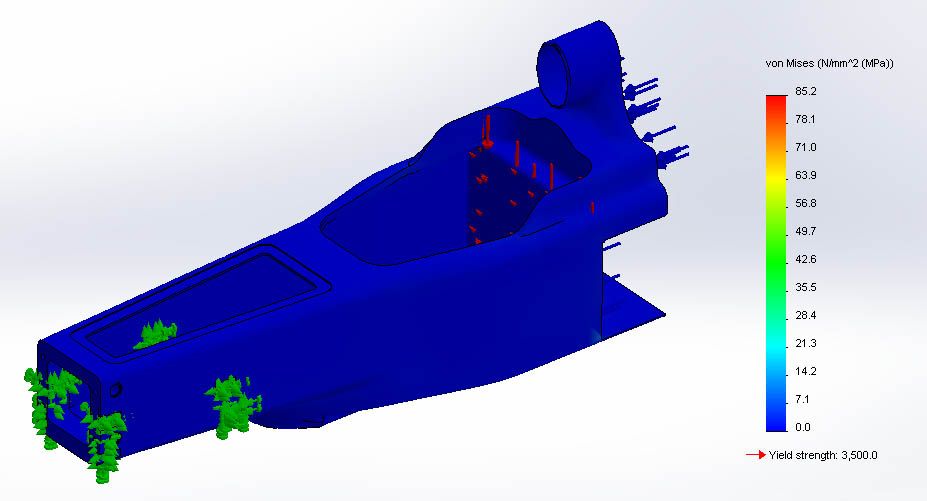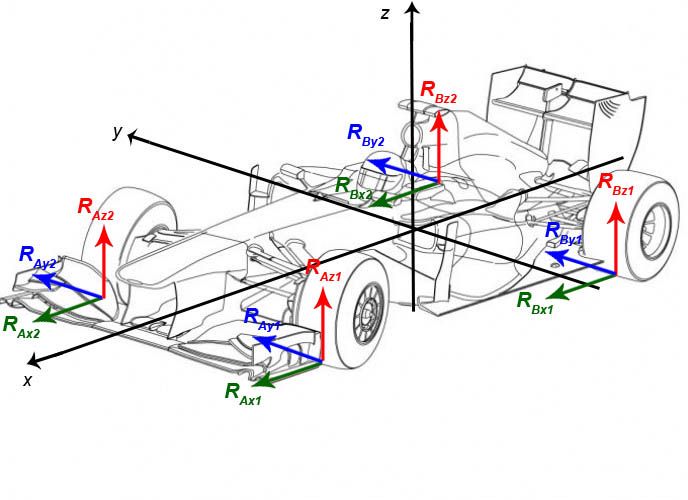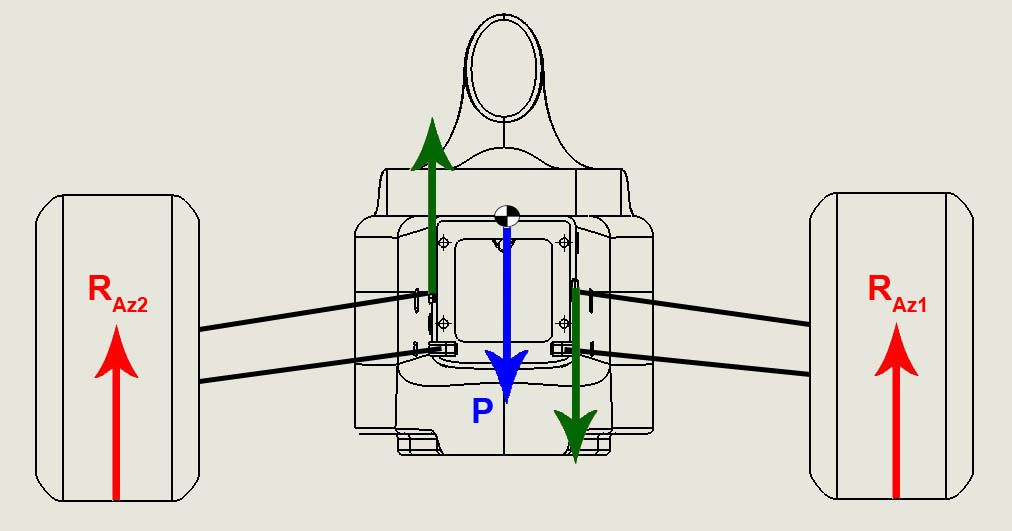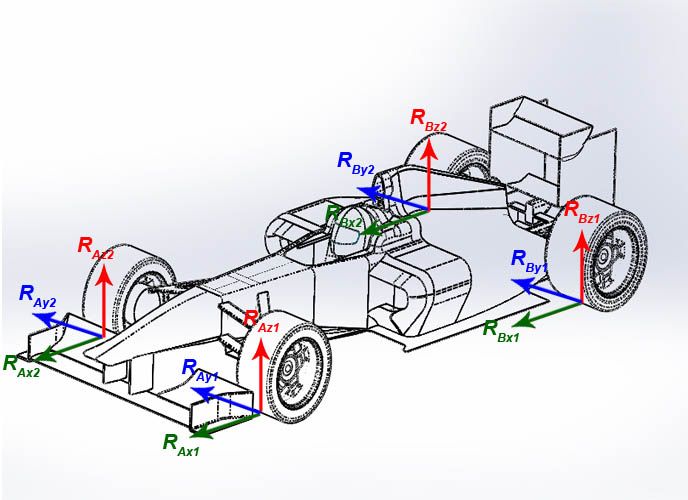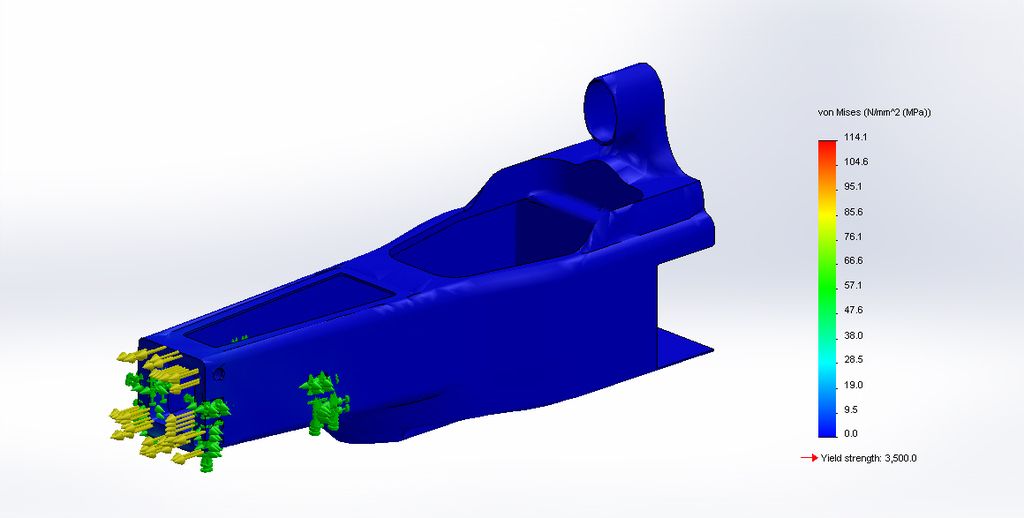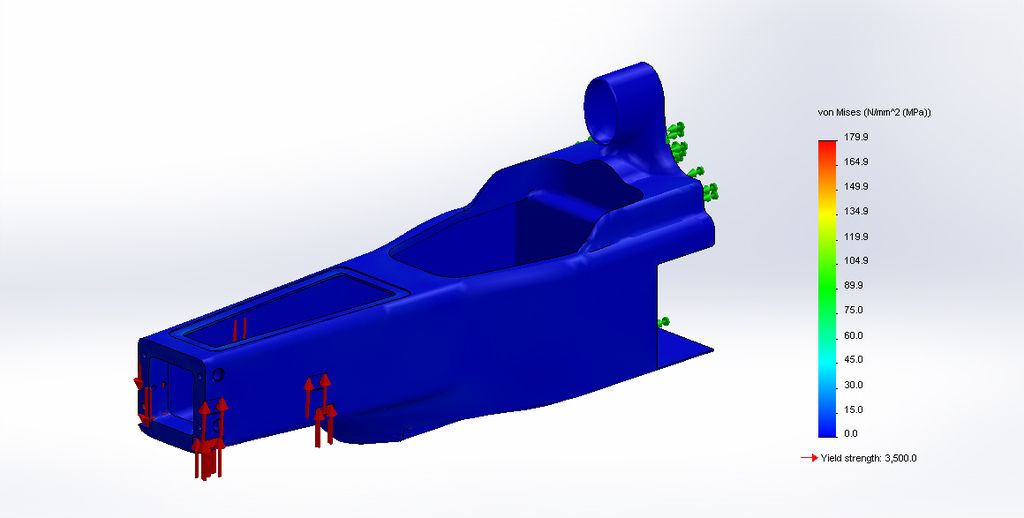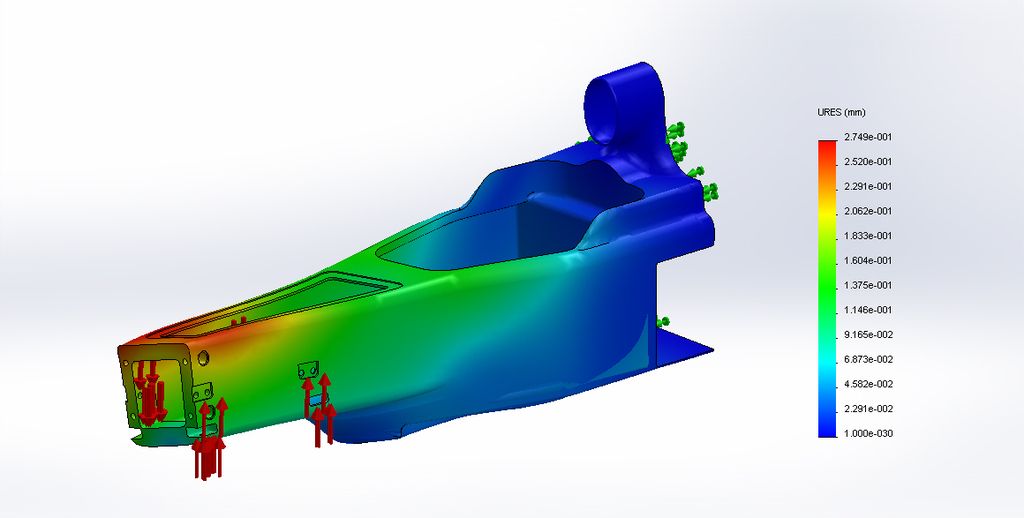As quick draft, that’s how I would start it:
1. Different driving situations (braking, acceleration, cornering, combined) will give you a bunch of different cases which you need to prove the stiffness for. Calculate the individual wheel forces for these driving situations. Also include some multipliers for dynamic events (curbs etc.). Generally this is the physical part of the project.
2. From the wheel forces calculate the reaction forces in each suspension pick up point (wishbone, rocker, damper, track rod). This step is very mathematical but makes the difference.
3. The reaction forces can be applied to your chassis model.
4. The mounting positions at your back face can be restrained
So far you have transferred the occurring wheel forces through your monocoque to the rearward part of the chassis. What is ignored so far is the mass of the chassis and individual parts mounted to it. It is up to you how much you want to go into detail with this but for sure there is a relative heavy driver sitting in the chassis generating relevant force.
5. Calculate the forces the driver mass is generating when exposed to external g-loads. Also take into account that the driver can generate significant brake force and an equivalent reaction force to the seat.
6. Also apply these forces to your chassis.
7. Repeat step 5 and 6 for all relevant masses.
The major difference to your approach is that you can only know and calculate the external wheel forces. The wheels are where the car is resting on. From this you work your way to the chassis over the suspension geometry which is splitting up the wheel forces into individual forces which are much higher. Then you apply additional forces to represent localized masses. Still it’s a simplified model and can always be questioned and I am looking forward to it.

